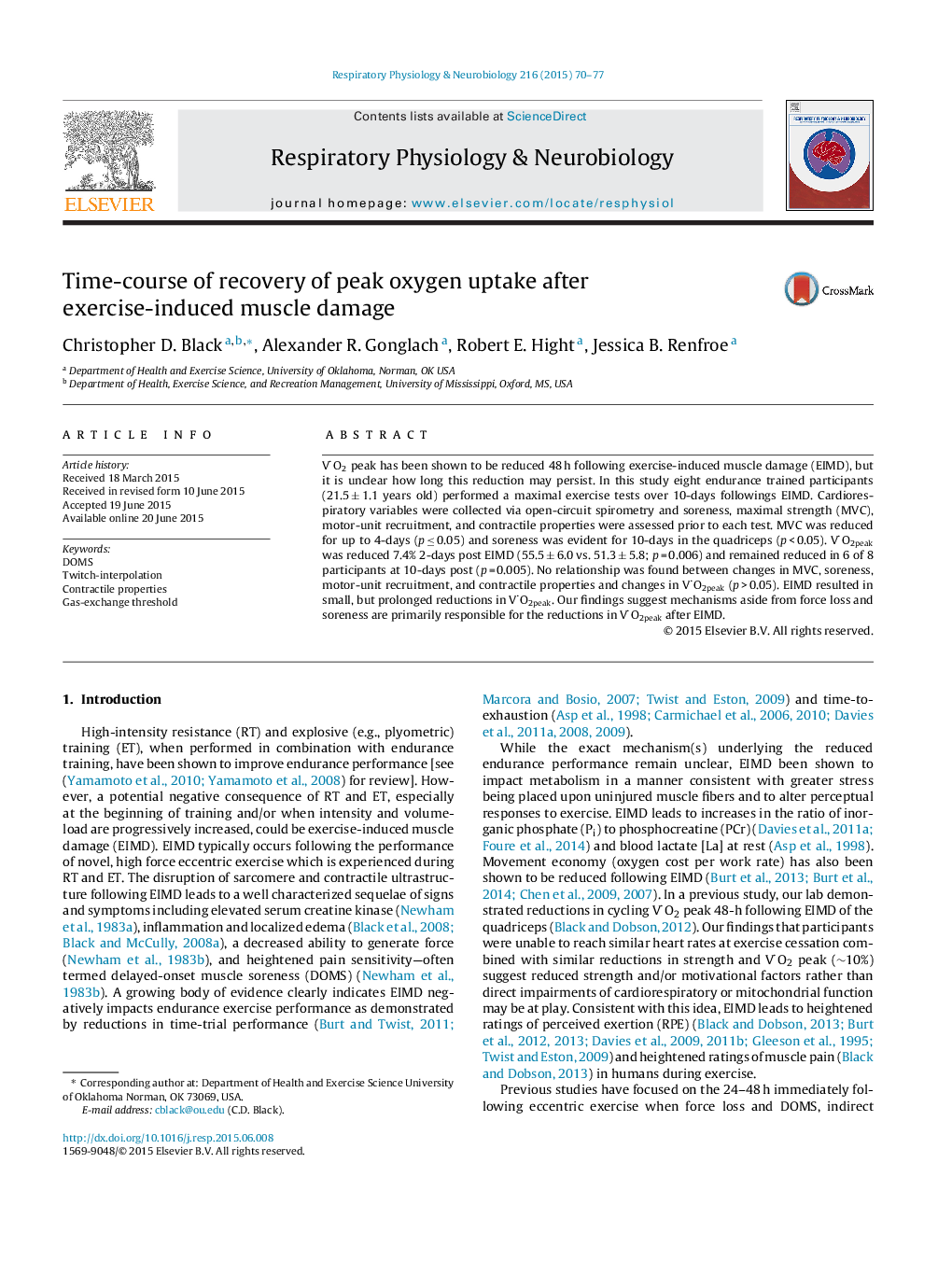| Article ID | Journal | Published Year | Pages | File Type |
|---|---|---|---|---|
| 2846839 | Respiratory Physiology & Neurobiology | 2015 | 8 Pages |
•Exercise-induced muscle damage reduces running V̇O2peak for up to 7 days.•Reductions in V̇O2 peak were not related to reductions in strength or DOMS.•EIMD increased muscle pain during submaximal running when soreness was at its peak.
V̇O2 peak has been shown to be reduced 48 h following exercise-induced muscle damage (EIMD), but it is unclear how long this reduction may persist. In this study eight endurance trained participants (21.5 ± 1.1 years old) performed a maximal exercise tests over 10-days followings EIMD. Cardiorespiratory variables were collected via open-circuit spirometry and soreness, maximal strength (MVC), motor-unit recruitment, and contractile properties were assessed prior to each test. MVC was reduced for up to 4-days (p ≤ 0.05) and soreness was evident for 10-days in the quadriceps (p < 0.05). V̇O2peak was reduced 7.4% 2-days post EIMD (55.5 ± 6.0 vs. 51.3 ± 5.8; p = 0.006) and remained reduced in 6 of 8 participants at 10-days post (p = 0.005). No relationship was found between changes in MVC, soreness, motor-unit recruitment, and contractile properties and changes in V̇O2peak (p > 0.05). EIMD resulted in small, but prolonged reductions in V̇O2peak. Our findings suggest mechanisms aside from force loss and soreness are primarily responsible for the reductions in V̇O2peak after EIMD.
